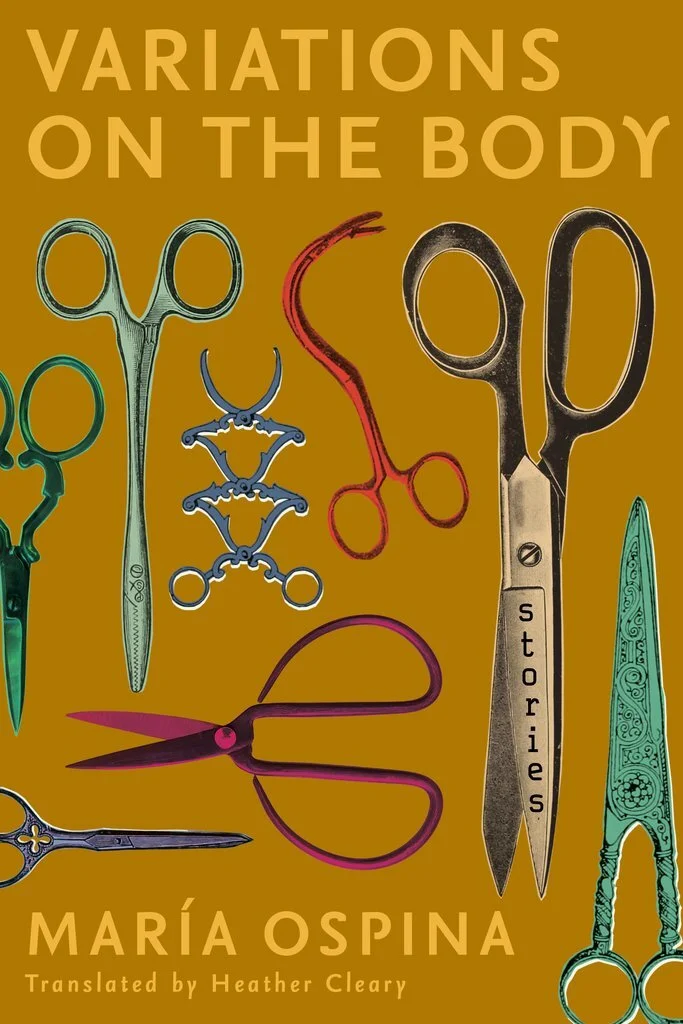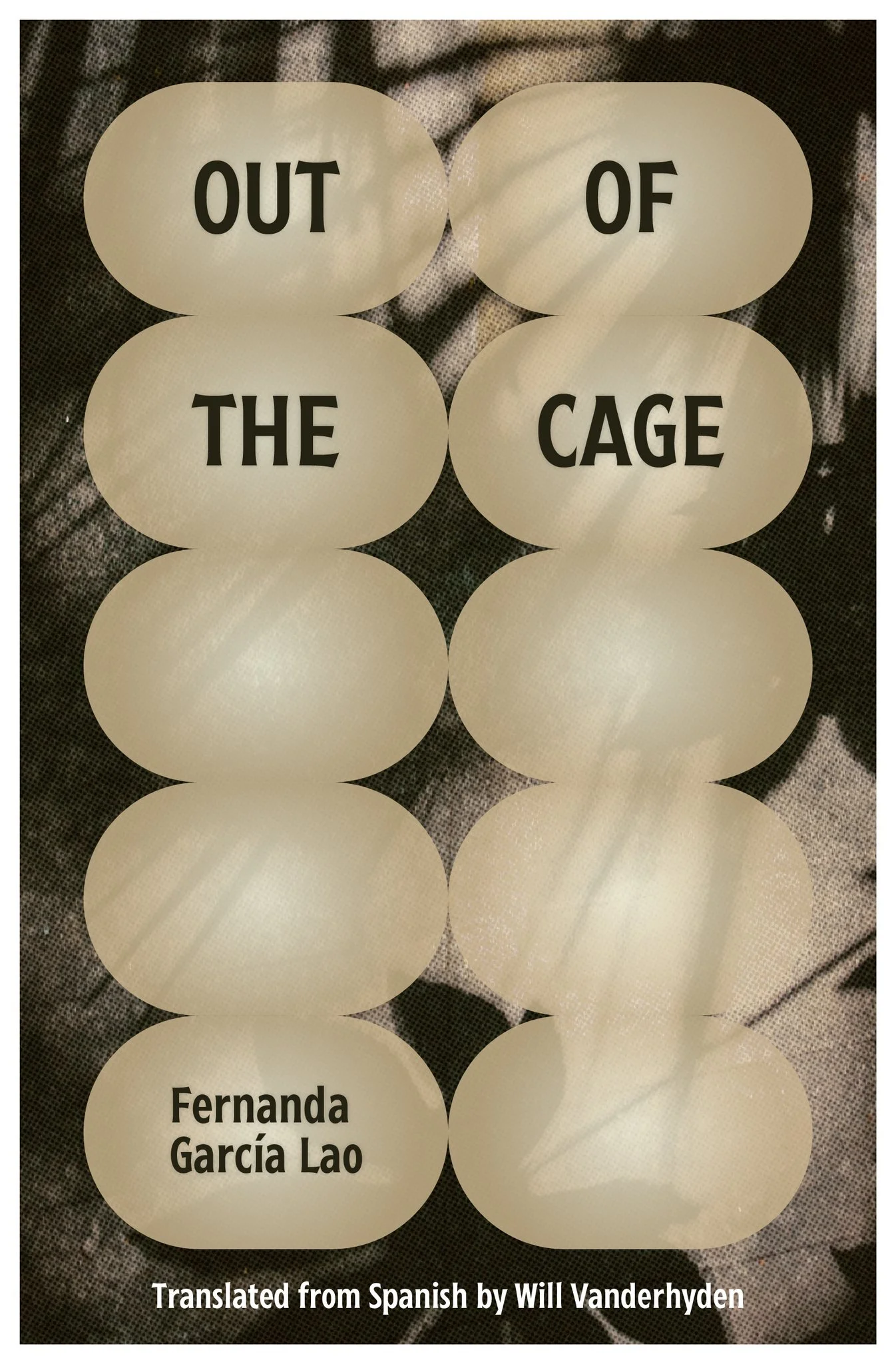Reviewed by Sarah McEachern
In "Fauna of the Ages," the fourth story of María Ospina's Variations on the Body, an unnamed woman writes about the flea infestation in her apartment through a series of literary devices. She makes lists, discusses over DMs, keeps a log, and begins an inventory of her bites. In her first entry, she notes, "fleas like women more than men." By the end of the short story, nearly seven months have passed, and she's realized that, "Fleas like the warm nooks and crannies of other animals even more than they like women." Of course, Ospina's short story, as well as this last sentence in particular, brings to mind not the habits of fleas, nor those of other animals, but instead the secret lives of women's bodies. Like all the short stories in the collection, women's bodies are front and center. The work's eponymous story begins with a bikini wax. In "Collateral Beauty," set in a doll repair shop, we meet the bored shopkeeper, Estefanía, "sticking a fat needle she'd found in the drawer of scalpels and suturing instruments into the raised skin of a blister on her foot" as she daydreams about what her life could become. Six stories make up Ospina's collection, and each of them offers narratives tuned into the undercurrent of a woman's body, which in turn refracts, anticipates, and precipitates the plot points of each short story.
Variations on the Body creates striking parallels throughout the collection. Ospina's characters are in conversation, even though they're scattered throughout Columbian society. Marcella, from, "Policarpa," and Aurora from "Savings Young Ladies" are seemingly opposite characters. Marcella has recently left the FARC Guerilla group and is navigating her reentry to society. Working in a grocery store and overwhelmed with capitalism, Marcella ends most of her shifts by buying something from the health and beauty counter. On her off hours, she attends group therapy and ventures to a publishing office, where she's working on her memoir with an editor. Aurora meanwhile has just returned to Bogotá from New York. She's editing her novel while watching the boarding school across the street, having become obsessed with a young student as they begin to exchange letters. Soon, their correspondence feels more important than Aurora's novel.
Both Aurora and Marcella are tied up in the process of editing themselves for an audience, and their relationships to writing mirror their connections to physicality. As Aurora watches the young students out the window, she notes the girls, "were resisting the passage into the solitude and isolation of adulthood, the demands to which every young lady is subjected: of being a discrete body." This idea is later reflected back onto Aurora, as she walks around her own apartment building with a hyper awareness of being watched by neighborhood men. Editing writing feels synonymous with the experience of a feminine coming of age, which includes the preparation of a body for the eyes of others. Editing writing for marketability—a specific type of interest in the arousal of others—dictates the authorly process through which Marcella suffers. As her editor cuts big pieces of her memoir in an attempt to shape it into a neat package for consumption, Marcella feels her personhood sold away. She's participating in capitalism and feeling its most violent erasure.
Quietly passed over in the supermarket and exhausted by its stimuli, Aurora revels in bodily feeling to find grounding. Ospina writes, "An ethereal wave of vomit surges up a tube deep, inside her, much deeper than her throat." At the beginning of the short story, a tag under Marcella's shirt bothers her, and as she scratches it Ospina says, "It feels good." The sensation of a body becomes a separate experience than the sensation of having a body through which to navigate the world, where it's consumed by others in the same way that the unnamed narrator in "Fauna of The Ages" is devoured by fleas.
While Ospina's short stories find a commonality in the familiar sensation of living within a body, Fernanda García Lao's novel Out of The Cage offers us the interior life of a woman without a body. The novel is set in 1956 Argentina, where we meet another Aurora. Killed in a freak accident, which she describes as, "unexpected and exquisite," Aurora continues to linger disembodied with her family: her domineering and unstable husband, The Colonel, their conjoined twin sons, Man and Fredo (collectively referred to as ManFredo), and their housekeeper, Yedra. Like the characters in Variations on the Body, Aurora finds herself in a vortex of writing and editing, saying, "Despite consciousness, when you die you cannot write. Words lose meaning, turn into hollow sketches. You can only talk around them, in the corners of the house, after dark." Effectively, Aurora haunts her family, watching their outrageous dynamics. Aurora makes a point of saying, "My death gives them life."
Out of The Cage is Lao's ode to absurdism, alluding to Sartre's No Exit when Aurora mutters, "Family is a kind of hell." The novel finds its true complexity in Aurora's observations. Each of the members of Aurora's family likewise struggles with bodily autonomy. The Colonel constructs a Frankenstein's-monster-type being, a woman-like creature meant to be a stand-in for a movie star with whom he's obsessed. The Colonel calls her Lana and forces her to sit at the table with the household. A perfect sexual object suspended between animatronic and humanistic, her role is to succeed Aurora as matriarch. ManFredo shares the same body and identity. Lao writes, "His fingerprints, his genitals, and his heart are only one," but having two separate heads, Man and Fredo are separate individuals struggling within the same body. They descend upon puberty and sexual maturity with drastically different approaches. Yedra feels Aurora's presence and begins holding seances, finding herself between the world of the bodied (living) and the disembodied (dead). Everyone in the family finds themselves in their own in-between hell, most of all Aurora, who sees herself as, "Halfway dead, neither cooked nor raw."
Without a body, Aurora can travel among her family members, intersecting with their thoughts, as well as the deep recesses of her own memory, with a nearly omnipresent reach. She says, "Death has no limits. I share the thoughts of any mind. Ideas aren't restricted to the head diameter. They're an amorphous blotch, imprecise." Still, she remains nostalgic for the sensation of a body. She recalls the passion of an extramarital affair, saying, "Of the economy of my flesh. We threw ourselves into bed at the slightest provocation." Remembering the exhaustion of her days in the theater before her marriage, she says, "my body oozed juice, like a squeezed grapefruit."
Out of The Cage is interested in the ideas of ownership over the body, particularly the suggestion of obligations around the body being placed there by the strange instinctual, biological ties of family. Aurora lingers after her death to stay with the gruff group of freaks who make up her family, admitting, "the omission of the self always comes from the outside." Lao is clear about where Aurora as an entity originates from, saying, "The soul's power cannot be conjugated. To be is infinite." It's the body that's fleeting. Even when it's gone, and even when ManFredo is surgically combined into one single entity (with three brain hemispheres), it's impossible to fully escape the complex ties a body has created.
At one point, Aurora says outright, "I am free. I don't have to deal with a bunch of ridiculous organs." I like to imagine what characters from Variations on The Body would think if they heard this. The lives of Ospina's characters, so precariously placed in Bogotá on every level of society, cannot escape their bodily experiences. A physical body enslaves them to a lifetime of presentation and preparation, yet the sensations of a body are all that can free them from the oppressive drivel of capitalism. While Out of The Cage is interested in how the body makes a person who they are, Variations on The Body is interested in how a body is edited and modified to be presented to others. Reading the two books back to back, Ospina and Lao seem to be in conversation about how commonplace yet frankly bizarre it is to have the nooks and crannies of a woman's body.


